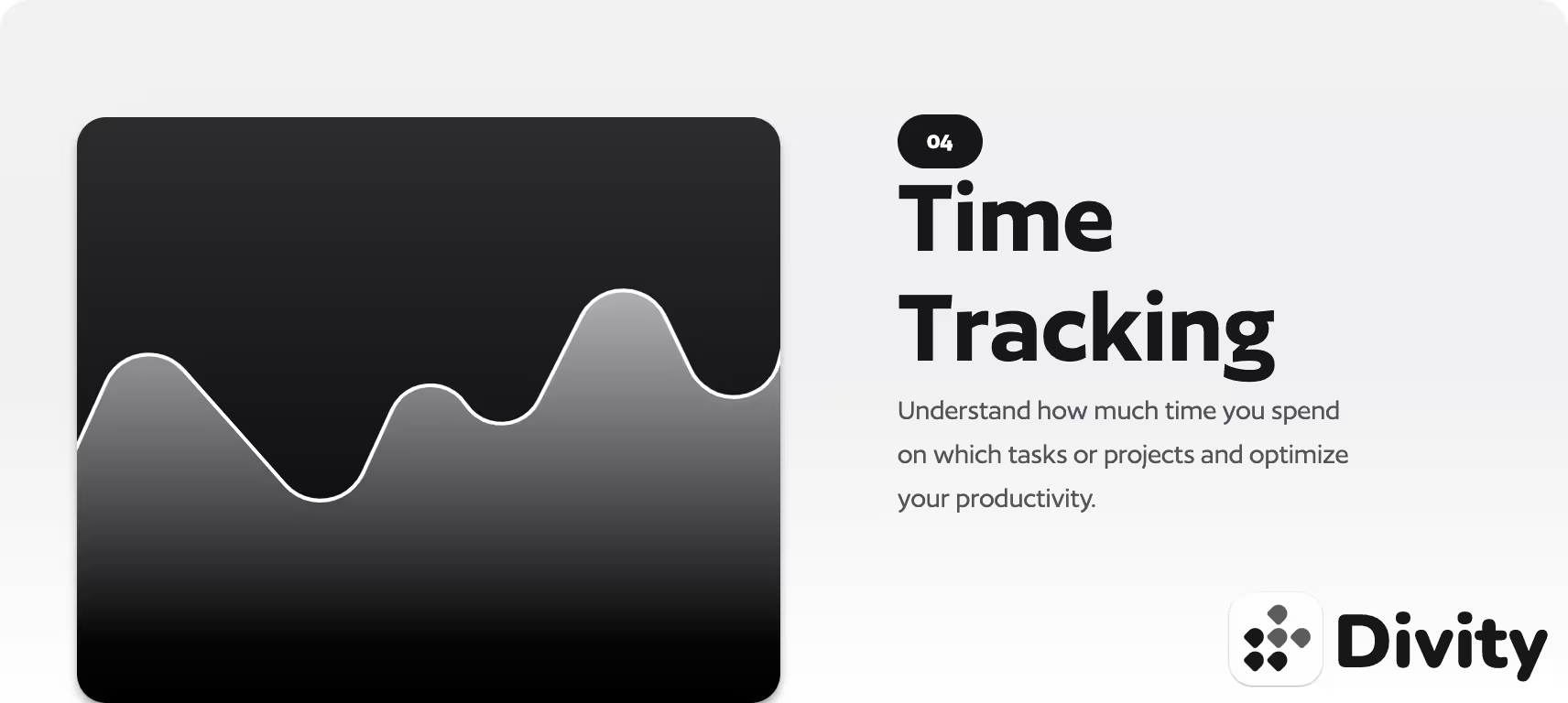Supercharge your productivity at work with proven time management techniques, effective goal setting, delegation strategies, and an organized workspace
Are you tired of feeling overwhelmed and stressed out at work? Do you find yourself constantly struggling to meet deadlines and juggling multiple tasks?
Whether you're a seasoned professional or just starting your career, the ability to optimize your time and maximize productivity is KEY to achieving success and maintaining a healthy work-life balance.
It's time to take control of your time and skyrocket your productivity, with our top 7 time management tips at the workplace tailored for you.
In this article, we will uncover some game-changing time management tips that will transform the way you work, allowing you to accomplish more and reclaim your work-life balance.
Let’s start with the most basic and fundamental one…
1. Set Clear Goals and Prioritize: The Path to Success
Imagine starting your day with a clear roadmap to success.
By setting clear goals and priorities, you can focus your energy on what truly matters. Break down your big goals into smaller, manageable tasks and create a prioritized to-do list.
As SUCCESS begins with CLARITY. To effectively manage your time at the workplace, it's crucial to set clear goals and priorities.
Without a destination in mind, you may find yourself aimlessly wandering through tasks and projects, lacking direction and focus.
By defining your goals, you create a roadmap that guides your actions and allows you to allocate your time and energy efficiently. And as you check off each item, you'll feel a sense of accomplishment and motivation to tackle the next challenge.
Start by identifying your long-term objectives. What do you aspire to achieve in your career? Where do you see yourself in one year, five years, or even a decade? Once you have a clear vision of your goals, break them down into smaller, actionable steps that you can pursue on a daily or weekly basis.
When setting goals, it's essential to make them:
- Specific
- Measurable
- Attainable
- Relevant
- Time-Bound
— commonly known as SMART goals.
This framework ensures that your objectives are well-defined, trackable, realistic, aligned with your aspirations, and bound by deadlines. SMART goals provide a sense of purpose and motivate you to stay on track.
Once you have established your goals, it's time to prioritize. Not all tasks and activities hold equal importance.
Determine which tasks directly contribute to your goals and have the most significant impact on your professional growth. These are your high-priority tasks—the ones that deserve your immediate attention and focus.
(We’ll share more about different productivity strategies in our upcoming blog posts soon)
2. Use a Time Tracking Tool: Unleash Your Hidden Potential
Now, have you ever wondered where all your time goes?
Time is a finite resource, and managing it effectively is crucial for maximizing productivity.
One powerful tool that can revolutionize your time management efforts is a time-tracking tool, and our suggestion will be - DIVITY!
By utilizing this technology, you can gain valuable insights into how you allocate your time, identify areas of improvement, and unlock your hidden potential.
Divity provides a comprehensive overview of how you spend your work hours. It allows you to record and analyze the time you allocate to different tasks, projects, and activities throughout the day, weeks, and months.

This level of visibility offers invaluable data-driven insights that can help you make informed decisions and optimize your workflow.
Using a time-tracking tool empowers you to:
- Track your activities: Gain a detailed understanding of how much time you spend on various tasks. By tracking your activities, you can identify patterns, determine which tasks are consuming excessive time, and identify opportunities for improvement.
- Identify time wasters: Discover activities or habits that eat up your time without contributing significantly to your productivity. By identifying and eliminating these time wasters, you can free up valuable hours that can be redirected towards more meaningful and impactful work.
- Improve focus and accountability: A time-tracking tool serves as a powerful accountability partner. It encourages you to stay focused and avoid distractions, knowing that your time is being monitored. This heightened sense of accountability promotes better time management habits and fosters a more disciplined approach to work.
- Optimize resource allocation: With accurate data on how you allocate your time, you can make informed decisions about resource allocation. You can identify tasks or projects that require more attention or additional resources and adjust your workflow accordingly to ensure optimal utilization of your time and energy.
- Enhance productivity: Armed with insights from a time-tracking tool, you can identify your most productive hours of the day and leverage them for high-priority tasks.
- Monitor progress and set realistic expectations: By tracking the time spent on specific tasks or projects, you can monitor your progress, identify areas where you're falling behind, and adjust your plans accordingly. This will help you set realistic expectations for yourself and effectively manage deadlines.
When selecting a time-tracking tool, it’s important to consider features such as automatic time tracking, customizable categories and tags, reporting capabilities, and integration with other productivity tools.
Feel free to check out Divity for overall time and project management, a visual calendar, and with automated time-tracking feature too.
By gaining visibility into how you spend your time, you can make informed decisions, optimize your workflow, and unleash your productivity like never before.
Now let’s move to the third tip…
3. Practice the Two-Minute Rule: Conquer Procrastination
Procrastination is a common enemy that often derails our productivity and hinders our progress.
To overcome this challenge, one effective strategy to implement is the "Two-Minute Rule".
We all have those small tasks that seem to pile up on our to-do lists. The two-minute rule is your secret weapon against procrastination.
This simple yet powerful rule can help you conquer procrastination and take immediate action on tasks that may seem overwhelming or daunting.

The premise of the Two-Minute Rule is straightforward:
If a task takes less than two minutes to complete, do it right away. Instead of putting off small tasks that can be easily accomplished in a short amount of time, tackle them immediately.
Adopting this rule will help you eliminate the tendency to postpone tasks and create momentum in your workflow.
Why does the Two-Minute Rule work? It's based on the principle that taking immediate action on small tasks provides several benefits:
- Eliminates mental clutter: By promptly addressing quick tasks, you prevent them from accumulating and cluttering your mind. This clears mental space for more significant and complex tasks, allowing you to focus and concentrate better.
- Builds a sense of accomplishment: Completing tasks, no matter how small, gives you a sense of achievement. This sense of progress fuels motivation and encourages you to tackle more challenging tasks with confidence.
- Prevents task accumulation: Neglecting small tasks can lead to their accumulation, resulting in a backlog that eventually becomes overwhelming. By applying the Two-Minute Rule, you ensure that these tasks don't pile up and create unnecessary stress.
- Boosts productivity: Taking immediate action on small tasks creates a productive mindset. It cultivates a habit of efficiency, where you address tasks promptly rather than letting them linger and distract you from more critical work.
To apply the Two-Minute Rule effectively, it's essential to distinguish between tasks that genuinely require immediate action and those that can be deferred.
Some key considerations include:
- Task complexity: Evaluate the complexity of the task. If it involves multiple steps or requires significant mental or physical effort, it may not fall within the scope of the Two-Minute Rule.
- Long-term impact: Consider the long-term impact of the task. Even if it takes less than two minutes, if it contributes to a more substantial project or goal, it may warrant additional time and attention.
- Priority alignment: Ensure that the task aligns with your priorities and goals. Sometimes, seemingly small tasks may not be worth your immediate attention if they don't contribute significantly to your objectives.
By practicing the Two-Minute Rule consistently, you develop a proactive mindset and minimize the habit of procrastination. Over time, this approach fosters a culture of action and enhances your overall productivity.
Remember, the path to success is paved with small steps. By conquering procrastination through the Two-Minute Rule, you take control of your time and move steadily towards your goals. Read more about in our article: Conquer Procrastination with the Two-Minute Rule!
Embrace this rule as a powerful tool in your time management arsenal and witness the transformative impact it has on your productivity and accomplishments.
Start small, act swiftly, and watch as your efficiency soars to new heights.
Minimize Distractions: Focus, Achieve, Repeat
In today's digital age, distractions are everywhere, vying for our attention and diverting us from our work. To maximize productivity, it's crucial to minimize distractions and create an environment that fosters focus and concentration.
Start by identifying the primary sources of distractions in your workspace. It could be constant notifications on your phone, a cluttered desk, or the lure of social media.

Take proactive steps to address these distractions and regain control of your attention. Implement strategies such as:
- Silencing notifications: Turn off non-essential notifications on your devices to minimize interruptions. Allocate specific times to check emails, messages, and social media instead of constantly being at their mercy.
- Creating a dedicated workspace: Designate a specific area for work that is free from distractions. Remove unnecessary clutter and create an environment that promotes focus and productivity.
- Setting boundaries: Communicate your need for uninterrupted work time to colleagues and family members. Establish boundaries and make it clear when you're not to be disturbed, allowing you to immerse yourself fully in your tasks.
- Utilizing time-blocking techniques: Allocate specific time blocks for different tasks and activities. During these focused periods, eliminate distractions and commit to working solely on the designated task.
- Practicing mindfulness: Develop mindfulness techniques to anchor your attention and combat distractions. Engage in deep breathing exercises or meditation to cultivate a state of mental clarity and concentration.
- Utilizing productivity tools: Leverage productivity apps or browser extensions that block distracting websites or limit your access to them during specific periods. (Like Divity)
By minimizing distractions, you create a conducive environment for deep work, enabling you to achieve a state of flow and accomplish tasks efficiently.
Remember, it's the uninterrupted focus that allows for breakthroughs and exceptional outcomes.
Take charge of your environment and consciously choose to prioritize deep work over superficial distractions.
We have discussed it in detail in our post Minimizing Distractions for Maximum Productivity! to help you discover effective strategies to minimize distractions.
5. Practice Time Blocking: The Art of Productive Flow
Imagine uninterrupted blocks of time where you can fully immerse yourself in your work. In the pursuit of optimal time management, mastering the art of time blocking can be a game-changer.
Time blocking is a method that involves scheduling dedicated blocks of time for specific tasks, projects, or activities.
By allocating focused time slots for different types of work, you can enhance productivity, maintain momentum, and achieve a state of productive flow. To practice time blocking effectively, follow these steps:
- Identify your priorities: Determine the most important tasks or projects that require your attention. These are the key areas where you want to make progress and achieve significant results.
- Break down tasks: Divide larger tasks into smaller, manageable chunks. This allows you to allocate appropriate time blocks for each subtask and helps prevent overwhelm.
- Set realistic time limits: Estimate the time required for each task or subtask. Be mindful of your own work pace and factor in potential interruptions or unforeseen circumstances.
- Create a visual schedule: Use a calendar or planner to create a visual representation of your time blocks. Assign specific time slots for each task, ensuring a balanced distribution of work throughout the day or week.
- Protect your time blocks: Treat your scheduled time blocks as sacred. Guard them against interruptions and distractions. Communicate your unavailability to colleagues or team members during these periods, allowing you to work without disruption.
- Embrace flexibility: While time blocking provides structure, it's essential to remain flexible. Adjustments may be necessary as priorities shift or new tasks emerge. Adapt your schedule accordingly while still maintaining a dedicated focus on your planned activities.
The benefits of time blocking are numerous, including enhanced focus, improved efficiency, greater productivity, reduced procrastination, and better work-life balance.
And the key to successful time blocking lies in consistent practice and adherence to the allocated time blocks.
So, be consistent and strive to get better everyday, my friend.
6. Delegate and Outsource: Empower Yourself
You don't have to be a superhero carrying the weight of the world on your shoulders.
Delegate tasks to capable team members or consider outsourcing certain responsibilities. By leveraging the strengths of others, you free up valuable time to focus on high-impact activities.
When it comes to workplace productivity, recognizing the power of delegation and outsourcing can be a game-changer. Effectively delegating tasks and outsourcing certain responsibilities not only lightens your workload but also empowers you to focus on high-value activities that truly require your expertise and attention.
Identify tasks that can be effectively handled by others, considering their skills, capabilities, and availability. Delegate these tasks, providing clear instructions and guidelines, and empower your team members to take ownership and contribute to the collective success.
In addition to delegation, outsourcing certain functions or projects can further optimize your productivity.
Outsourcing involves entrusting specific tasks or projects to external professionals or service providers who specialize in those areas.
This allows you to tap into their expertise, leverage their resources, and benefit from their specialized knowledge, ultimately enhancing efficiency and quality.
By delegating and outsourcing, you experience several benefits like enhanced focus, increased productivity, improved time management, better work-life balance, etc.
Remember, effective delegation and outsourcing require clear communication, trust, and a willingness to relinquish control.
Regularly evaluate tasks and responsibilities to identify areas that can be delegated or outsourced, allowing you to focus on strategic decision-making, innovation, and other value-added activities that drive success.
Embrace the power of delegation and outsourcing, and unlock your full potential. Empower yourself and those around you by harnessing the collective strengths and talents within your team and leveraging external expertise to propel your productivity and achieve remarkable outcomes.
7. Maintain a Clean and Organized Workspace: Clear Space, Clear Mind
Your physical and digital workspace plays a significant role in your productivity. Declutter your surroundings, keep essential items within reach, and establish an organized filing system.
When you have a clean and organized workspace, your mind can focus on the task at hand without unnecessary distractions.

The state of your physical workspace has a profound impact on your mental clarity and productivity.
A clean and organized workspace not only creates a visually appealing environment but also promotes focus, improves efficiency, boosts productivity with enhanced creativity and inspiration, and maintains a clear state of mind.
To maintain a clean and organized workspace, consider implementing these best practices:
- Regular decluttering: Set aside time to declutter your workspace and eliminate unnecessary items. Keep only essential tools and materials within reach, storing the rest in designated areas or drawers.
- Establish a filing system: Use file folders or digital organizing tools to categorize and store important documents, reducing paper clutter and making information retrieval quick and efficient.
- Designate storage spaces: Assign specific areas or containers for different types of items, ensuring that everything has a designated spot. This helps maintain order and makes it easier to find items when needed.
- Clean and sanitize: Regularly clean your workspace, wiping down surfaces, and sanitizing equipment. A clean environment not only looks appealing but also promotes a healthy work atmosphere.
- Personalize with intention: Add personal touches to your workspace, such as photos or plants, but be mindful not to overdo it. Strike a balance between a personalized space and a clutter-free environment.
By maintaining a clean and organized workspace, you create an environment that supports productivity, clarity, and well-being.
Invest time in organizing and decluttering regularly to reap the benefits of a clear space and a clear mind.
Now that you have discovered these Top 7 Time Management tips, it's time to take action and transform the way you work.
Embrace these strategies, make them a part of your daily routine, and watch as your productivity soars, stress levels decrease, and you find a newfound balance in your work and personal life.
Let us know if you need help with any thing specific regarding productivity or scheduling, as we not only deal with providing a good software, but also with serving our audience with the best information and strategies to stay productive and efficient in their daily life.
Let’s Go!!!
So, are you Ready to supercharge your productivity? Join Divity's waitlist now and reclaim your time!



